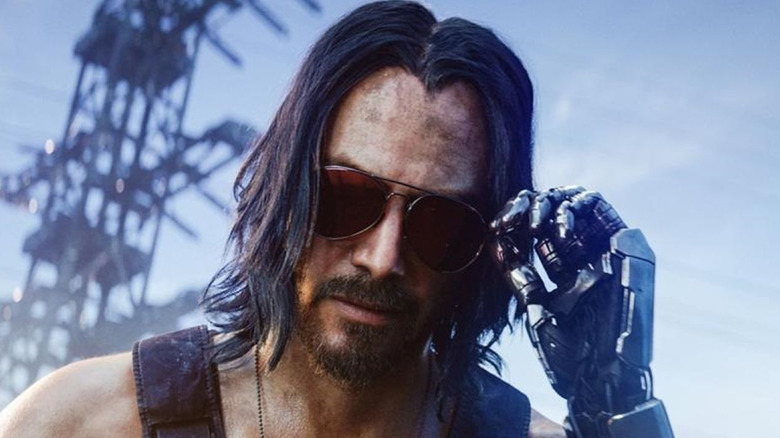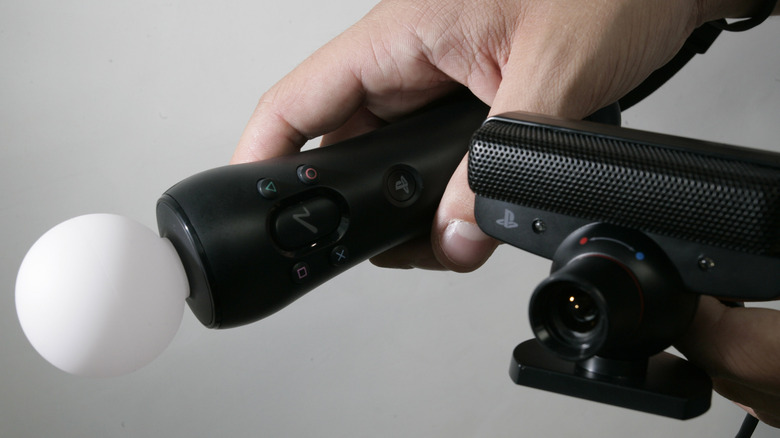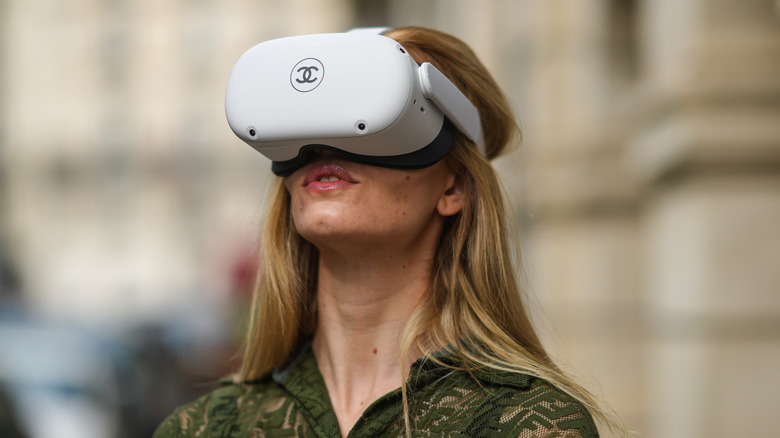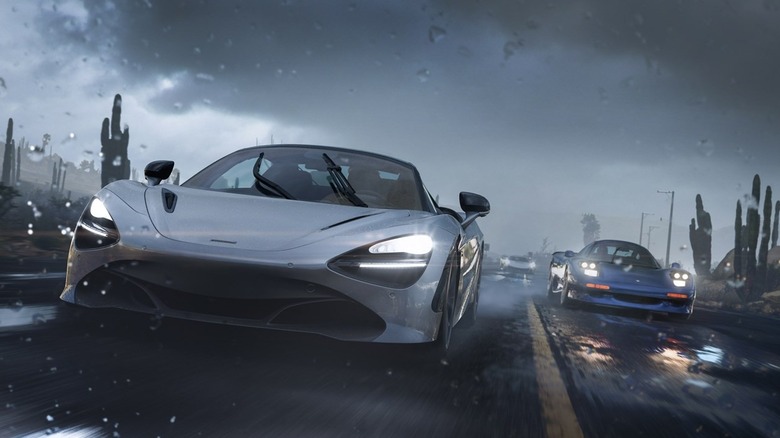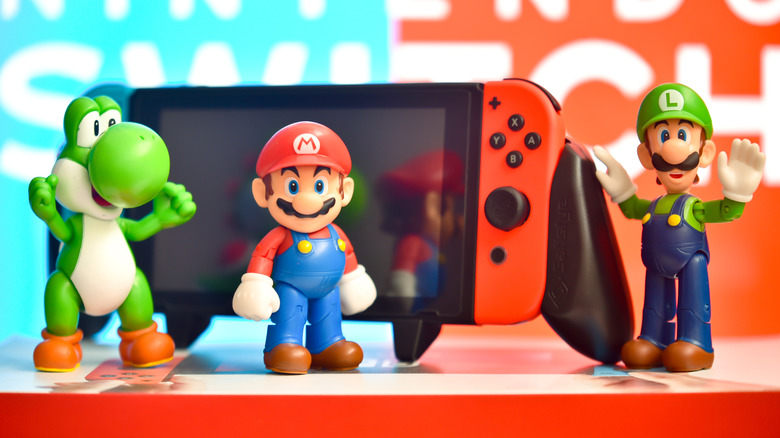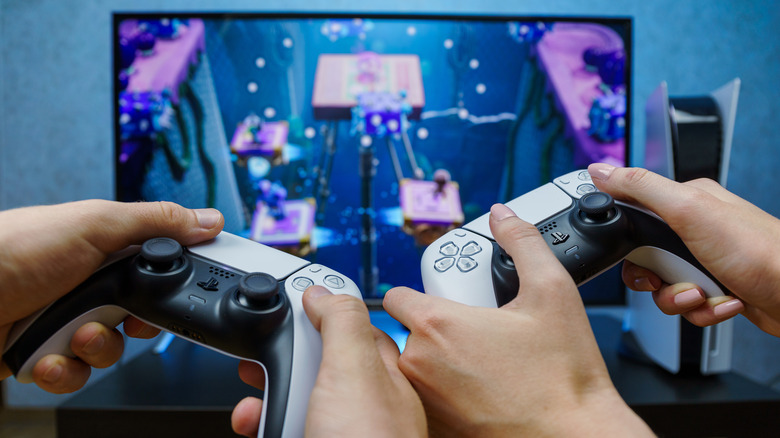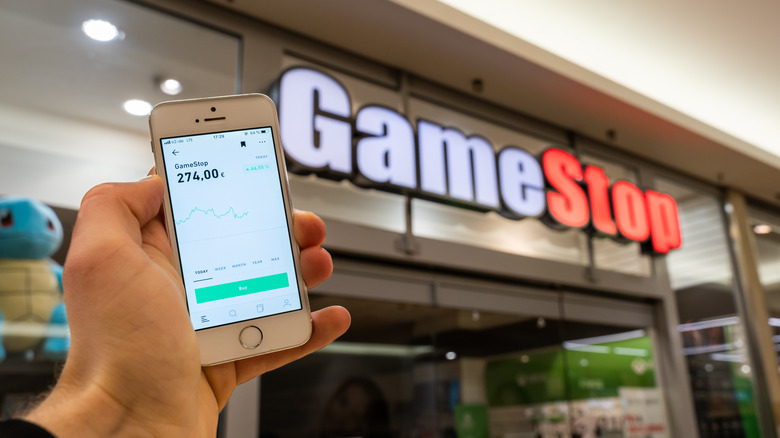Big Gaming Predictions That Aged Poorly
The nature of the tech industry is to over-promise and under-deliver. Good business dictates an opposite practice, but each new technology promises to change the world as we know it. Oftentimes, new technologies are viewed with rose-tinted glasses and their proposed usefulness gets blown out of proportion. Video game technologies are no different, and the industry is always trying to predict the next big thing.
Fans recognize the general shape of the games industry by this point: Many of the most popular games operate as live services with in-game currencies, new developments are shared through the developers' open roadmaps, and communities develop alongside these titles. These aspects of gaming have been predicted in the past, but what about all those forecasts that didn't quite hit the mark? It happens more often that you'd think, so why not step back and take a look at gaming predictions from the past that have aged poorly?
Motion sensor adoption
Only time can ultimately tell whether trends are here to stay or destined to go — and time seems to have mostly ruled against motion sensing technology for game consoles. Microsoft, Sony, and Nintendo all tried their hand at making software that relied on tracking its player's hands.
At E3 2009, the console world was shaken by multiple motion sensing announcements (per Gizmodo). Microsoft's Xbox line would introduce Project Natal (later renamed to Kinect) and Sony introduced Playstation Move. Similar to the system utilized by the Nintendo Wii in 2006, cameras mounted on the TV or entertainment system provided the video feed. Pitched to consumers as an aerobic exercise machine that the whole family will enjoy, even the American Heart Association backed the Wii in official statements. At the time, Project Natal and the PS Move were seen as the latest entries in the never-ending console wars between Microsoft, Sony, and Nintendo.
The Nintendo Wii was the only truly successful motion sensing console, for a variety of reasons. The Wii's library was primarily made up of games with motion-sensing mechanics, which forced game developers to integrate those into their designs. On the other hand, PS Move and Kinect failed due to a lack of innovation and reports of motion sickness and property damage. Peaking in the early 2010s, motion-sensing games now feel more like a novelty than a certainty in the industry.
Virtual Reality (VR) will be everywhere
A staple of sci-fi futurism dating back to the 1980s, the cultural expectations of fully-realized virtual worlds have only continued to grow. Virtual realities have been the focus of pop culture stories for a while, with movies like "The Matrix" epitomizing the notion of a plugged-in virtual world.
These predictions gained a lot of traction in 2014 when Facebook bought Oculus, a VR-headset maker, for $2 billion. Oculus released the Oculus Rift in 2016, and it was championed as a pioneering device for the industry. With many ease-of-use capabilities built-in alongside a project roadmap that promised expansion of immersive VR control systems, the Oculus Rift was initially regarded as a hit. However, as time progressed, many issues reared their ugly heads for the VR giant (per CNET).
As noted by CNBC, a high barrier-to-entry cost prevented many gamers from accessing the VR industry's higher-end titles. Samsung released VR Gear allowing users to mount their phone to a cheaper headset, but requiring VR games to run on a mobile device seriously hampered the capabilities of the system. Reports of motion sickness after extended use and lack of definitive movement controls have also kept VR from taking off in the way people expected.
The ubiquity of Augmented Reality (AR)
Frequently paired alongside its more attention-grabbing cousin, VR, augmented reality has garnered a great deal of buzz in the gaming industry. Long considered for more application beyond gaming, AR has been used for everything from interior design and trying on accessories to live-mapping medical patients.
Augmented reality games have not gained quite as much industry investment as VR has, but outlets such as Network World have predicted that augmented reality could even supplant VR in popularity and widespread usage. However, nothing in the space has proven to be quite as much of a mainstream hit as "Pokémon Go". With over $5 billion generated in lifetime revenue and over 600 million unique downloads (per Dot Esports), "Pokémon Go" has changed the way the industry viewed AR games.
Striking the iron while it was hot, Niantic, the company behind "Pokémon: Go", has a reported 9 new titles in its creation pipeline centered around augmented reality. Unfortunately, one of Niantic's more recent AR titles, "Harry Potter: Wizards Unite," is officially shutting down its servers in 2022.
Tech Crunch has noted that the wizarding game saw a lack of success relative to that of "Pokémon Go," Since there has only been one release in the AR genre to reach mainstream success, it's safe to say that AR has a lot more growing to do before it will be considered ubiquitous in the industry.
Photorealistic Graphics are coming
There is no denying that graphics in video games have improved rapidly during the 2010s. One of the best examples for the improvement in graphical fidelity over the decade is to compare 2010's "Red Dead Redemption" to its sequel, "Red Dead Redemption 2," which released nearly a decade later in 2018. The leap from Standard Definition (SD) to High Definition (HD) has only been made more apparent with games branching into 4k resolution and motion capture, with many titles more closely resembling movie-level CGI.
However, as graphics progressed, so did the expectations that all games end up mirroring real-life visuals in the very near future. Games like "Forza Horizon 5" have accomplished this incredibly rare feat of realistic representation, but as noted by Virtual Reality Times, most game designers don't have plans to reach that level of graphical fidelity. In fact, improvements in graphics have slowed in the past few years have slowed.
Whereas adding a few thousand new polygons to a surface crossed the gap from SD to HD in the past, adding that same number of polygons to HD images is less important, because humans can't make out such minuscule differences. Add on the increase in software and hardware requirements for photorealism, and suddenly the path from HD to photorealism becomes quite a costly leap.
Some people in the gaming industry have even warned about the desirability of photorealistic graphics (or lack thereof). The Uncanny Valley is a term often used to describe the phenomenon in which increasingly realistic animations appear even more unnatural than stylized animations. Although some have considered photorealistic graphics to be the future, it may be a goal that's better left unreached.
The Nintendo Switch will bomb
Looking back now, it may seem laughable that anyone would doubt the success of the Nintendo Switch. Nevertheless, the Nintendo Switch was met with skepticism upon its announcement.
Critics were quick to point out its $300 price point, which some thought was too much to pay for a system with lesser hardware capabilities in relation to the PS4 and Xbox One. With Sony's decision to end support for the failed PS Vita, handheld consoles were at a low point. Furthermore, as noted by Forbes, some people had simply lost their faith in the Nintendo after the Wii U flopped so anything coming from Nintendo really had to prove itself.
However, where there were once concerns surrounding the Nintendo Switch library, the console now hosts one of the most diverse ranges of console-native and ported content libraries available on the market, ranging from blockbuster franchises to hidden gems. In terms of console sales numbers, the Nintendo Switch has outpaced some of the best selling consoles of all time, like the PS3 and Xbox 360, crossing the landmark of over 89 million units sold in August 2021.
Cyberpunk 2077 will change RPGs forever
Few games have ever reached the pre-release hype that "Cyberpunk 2077" achieved throughout 2020. Buzz for the game mounted for nearly a decade, with the attached talents of celebrities like Grimes and Keanu Reeves further serving to tantalize fans. The title was expected to be a game-changer on many fronts for the RPG industry, and CD Projekt Red marketed "Cyberpunk 2077" as a free-flowing narrative experience with levels of customization never before seen. The marketing wave led players to believe deeply in its deep character customization, interactive movie-like cutscenes, and intuitive hacking system. Who wouldn't be hyped for Cyberpunk after watching Keanu's legendary presentation at E3 2019?
What finally released — after many delays — fell short of those expectation. Engagement with "Cyberpunk 2077" started to dwindle with the release date pushbacks, but the overload of bugs and missing features were the nail in the coffin. CD Projekt Red had released a string of fantastic games — including a Game of the Year winner in the "Witcher 3" — so the bar was set quite high for the followup RPG. Unfortunately, the game was not able to live up to its lofty expectations, and CD Projekt Red has had to severely cut its projected sales for "Cyberpunk 2077."
World of Warcraft Killers
The smash hit "World of Warcraft" basically birthed MMORPGs as fans know them today. Its class-based character creation, open-world questing mechanics, peer-to-peer commodity trading, varied dungeons, and guild-based communities set the standard for the genre — but success always leads to imitators. While imitation can be considered the ultimate form of flattery, the MMORPGs that have attempted to emerge in the wake of "World of Warcraft" wake have attempted to take as much market share as possible from the titan.
Up and coming MMORPGs like "Guild Wars 2" would be titled "WoW killers" by their communities prior to their launches. As noted by YouTuber Pallytime, titles like "Elder Scrolls Online," "Wildstar," "Rift," "Age of Conan" and many others were predicted to be "WoW killers" at one point or another.
However, it wasn't until recently that any so-called "WoW killers" have made a considerable run at challenging for the top spot. And even then, titles like "Final Fantasy 14: A Real Reborn," "Genshin Impact," and "New World" have all seen success innovating in ways that are different from "World of Warcraft." And although "World of Warcraft" has seen a decrease in subscribers in recent years, it's remained as resilient as any other game, defining a genre and defending its moat for over 15 years.
Half-Life 3 Confirmed?
"Half-Life 2" is widely considered in gaming culture as one of the best games of all time. It was a monumental release in 2004, offering an immersive sci-fi world with gripping characters and a masterfully-paced story — which ended in a cliffhanger. The graphics set the bar high for the time, introducing new cutting edge facial animations. Ever since its final episode's release, fans of the series have been eagerly awaiting any official news of its long-fabled sequel, "Half-Life 3."
Valve has been hesitant to speak on the subject of "Half-Life 3" because of rampant speculation online, but in 2006, Valve founder Gabe Newell said that the episodic expansions for "Half-Life 2" should probably have been titled "Half-Life 3" (per PCGamesN). Then, during a 2017 Game Informer interview, an anonymous source claimed, "There is no such thing as 'Half-Life 3.'"
At this point, gaming culture has turned the idea of "Half-Life 3" into a meme of mythical proportions, with fans going wild with conspiracy theories regarding the game. These theories were again stunted by the release of the VR-only "Half-Life: Alyx" in 2020. While hope never dies for some, it seems like Valve is more interested in taking "Half-Life" down a different path.
AI will change how games are played
Artificial intelligence has gained incredible momentum in traditional finance markets, with big data taking over logistics and marketing. Neural networks allow computers to make decisions across a broad set of information, deep-learning algorithms enable self-improvement for computers, and large-scale data analyzation allows customizable content to flow from marketers to consumers. As noted by Wall Street International, the bridge between human and machine intelligence is taking over the tech world – but has it consumed gaming yet?
There has been no shortage of predictions surrounding the massive impact that AI will have on the video game industry. AI maximalists have claimed that AI in games will allow for generative dialogue sessions where the game responds to the player, sort of like Alexa does with its users. Some have claimed that neural networks will be able to create novel level designs based on the trial history of previous player's behavioral patterns. In general, the aim of AI's integration into video games deals with the ways in which content can change based on repeated play (per The Verge).
Although people have been making these claims for years, and while this industry is still relatively new, there haven't yet been any major mainstream successes in this area. Perhaps the largest achievements of AI in gaming to date are the algorithms AlphaGo and AlphaZero, which have proven capable of defeating the best Go and Chess players in the world. IBM Watson similarly won a game of Jeopardy back in 2011 (per Tech Republic). But besides these successes, gamers haven't quite seen the potential of this sleeping giant.
GameStop will go out of business
A sanctuary to gamers of the pre-digital-product age, GameStop has had a tough time in the past. Notorious for its low trade-in evaluations — even while games were still primarily sold as physical copies — GameStop struggled to maintain a solid consumer base going into the digital age. Gamers and investors both picked up on this trend, sending GameStop on a downward trajectory for years (per GamesIndustry.biz).
This nosedive in relevancy would only be exacerbated by the global COVID-19 pandemic. Brick and mortar retail stores were hit harder than any other industry, with many big-name retailers like JCPenny closing a massive number of stores. Investors pegged GameStop as another business trending towards bankruptcy. That is, of course, until the meme stock rally of 2020.
In early 2020, things starting looking up for GameStop, which saw a huge surge in stock prices over the course of a couple of weeks. The price spike was attributed to a short squeeze triggered by retail investors. This ultimately allowed GameStop to sell stock into the market at those higher prices, getting the company completely out of debt (per CNBC) and making enough money to restructure itself for the digital age.
The trading frenzy and drama attracted the attention of Congress, and its cultural impact is already being made into a movie. According to the Wall Street Journal, GameStop Corp.'s new chairman, ex-Chewy CEO Ryan Cohen, is now working to transform a company that now shows no sign of dying.
The Future of 3D Monitors
When 3D televisions hit the mainstream market in 2010, they created a hype wave of their own. Released after the incredible success of James Cameron's "Avatar" in movie theaters, 3D entertainment was expected to start entering the home more regularly (per Digital Trends). Meanwhile, marketers saw a similar opportunity for consumers in the form of 3D gaming monitors.
3D monitors grew hype as major companies like Sony got on board. players. As with any new technological innovation, imaginations ran wild and outlets such as Tech Radar reported that 3D gaming was a long-term inevitability, and that gaming had been forever changed.
Unfortunately, 3D monitors never even saw the same amount of limited success that 3D TVs achieved. Similar issues plagued both endeavors — the technology was too pricey, the viewing experience was largely poor, and some people became nauseated through extended use. Not only were there high barriers to entry for consumers in terms of cost and equipment, but producers also experienced difficulties with the demands of making their games 3D compatible.
Since the early 2010s, talk of 3D monitors and 3D gaming has mostly died.
Mobile Games are just a fad
Mobile games have long been met with skepticism by consumers, but game developers know that mobile games are some of the biggest cash cows on the market today. To the critic, the history of mobile games is littered with pay-to-win title that generally lack raw gameplay in favor of ads. To the game production company, the accessibility of mobile games has led to huge profits.
Before titles like "Genshin Impact" or "Clash of Clans" went on to generate hundreds of millions of dollars, mobile games got a bad rap. Skeptics cited lack of hardware capabilities, but now some phones can run games better than some gaming laptops can. Ease-of-use for some gaming applications — like looking around and shooting at the same time in FPS games — were criticized, but now some FPS games like "Call of Duty: Mobile" are attracting hundreds of millions of downloads.
Some hardcore fans in the gaming space are still hesitant regarding mobile games. For example, at Blizzcon 2018, fans thought that the announcement that "Diablo Immortal" would be mobile-only was an out-of-season April fools joke. When they learned it wasn't, they were less than happy (per Kotaku). Times are always changing, and companies are shifting steadily towards mobile games due to their lucrative track record.
Mixer will rival the biggest streaming competitors
In 2017, Microsoft purchased Beam and renamed the company Mixer, attempting to enter the growing streaming field against competitors YouTube, Facebook, and Twitch. In streaming's relatively short history, Twitch has always been the top dog, which led to Amazon buying it in 2014 after seeing its year-over-year growth.
Mixer immediately went toe-to-toe with Twitch, signing away some of its brightest stars in 2019. Ninja's $20-30 million exclusive streaming deal with Mixer (per GamesIndustry.biz) was the most valuable contract in streaming history. Shortly afterwards, Shroud moved as well, marking the peak of the streaming wars between Twitch and Mixer. While the viewers and stars of each platform claimed supremacy, Mixer never really stood a chance.
Mixer failed because it was unable to grow its viewership base fast enough to compete with giants like YouTube and Twitch. Mixer saw a 0.2 percent growth in stream hours watched between April of 2019 and April of 2020, compared to a triple-digit percentage increase for each other streaming service. Without enough viewer eyes to grab advertising dollars, Microsoft shut Mixer down in July 2020, offering its streamers a chance to transition to the Facebook Gaming Level-Up program in July of 2020.

